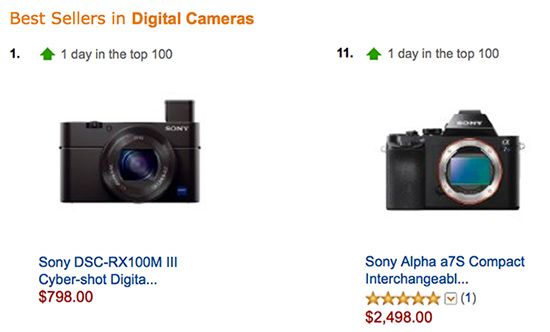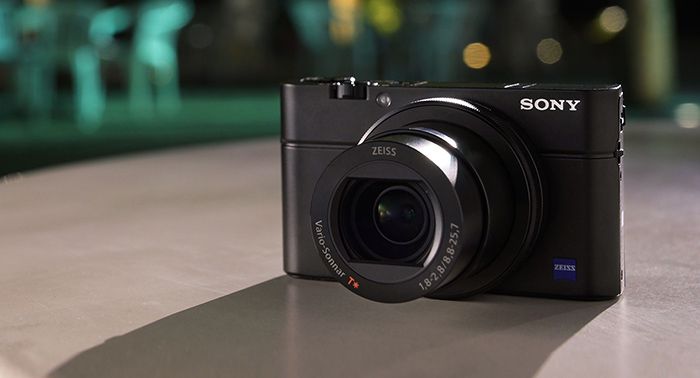
The Sony RX100M3 is still leading the Amazon camera ranking (see the list here). Also the Sony A7s is doing well but is falling behind after reaching top 10 yesterday.
But now let’s take a look to some very interesting info about the camera shared by sites that actually had the RX100M3 in their hands. And there are actually some info I am sure most of you were not aware of like 5axis stabilization and the new “AA” aspherical lens type:
Image Quality:
ePhotozine: The camera features a new BIONZ X processor as used in other Sony cameras – this offers improved detail reproduction technology, diffraction reducing technology when using smaller apertures, as well as improved area-specific noise reduction.
Lens:
Dpreview: Sony is immensely proud of one of the technologies it has developed: the combination of two aspherical lens elements. This has been key to allowing such a wide and bright lens to be built into such a compact design. The lens can focus as close as 5cm at wide-angle and 30cm at the long end of the zoom.
ePhotozine: This is designed to enable better background blur and portrait shots in combination with the brighter f/2.8 aperture at the telelphoto end of the lens – a noticeable improvement over the RX100 and RX100 II.
DSLRmagazine: Note that of these 10 elements (lenses) 9 are aspheric, which certainly represents a record for a compact camera. The up to 3 stop ND filter comes handy seen that the maximum shutter speed is 1/2000.
Trustedreviews: Focusing distance has also improved with it now able to focus within 30cm of a subject at the long end of the zoom.
Photoscala: The lens has 9 aspherical elements and two of them are “AA” (=advanced aspherical). Lens is definitely not a Zeiss Biogon because distortion is corrected in camera.
Autofocus:
ePhotozine: Focus features have been updated to include: Lock on AF – continuously tracks moving subject, Easier auto focus area settings, Eye-detection auto focus for portraits, Auto object framing, MF assist, Focus peaking, and a Zebra mode has been added. You can also customise the size of the of the fous point, setting the size from large, medium and small.
Trustedreviews: Auto-focus performance was as good as we’d expect with the RX100 II locking onto subjects with minimal fuss, even in relatively low-light conditions.
Speed:
Trustedreviews: Claimed to operate three times faster than the previous Bionz engine, the RX100 III maintains a maximum ISO sensitivity of ISO 25,600 and is capable of shooting at up to 10fps in its Speed Priority Continuous Shooting mode.
LCD:
Dpreview: While the LCD has a total of 1.23 million dots, the actual resolution of what you see on the screen is VGA – 921,000 dots worth. The difference between those numbers comes from Sony’s WhiteMagic technology, which has a fourth white pixel, which allows for both a brighter screen along with reduced power consumption.
ePhotozine: The 3inch screen now tilts forwards to enable “Selfie” shots or group shots.
EVF:
Dpreview: At the push of the button, the EVF rises up and turns the camera on and off when you put it back down. If you look right into the EVF on engaging it everything will be blurry, but that’s because you need to ‘pull’ the finder toward you. Once that’s done you’ll be impressed with the quality of this OLED display, despite the 800×600 pixel SVGA resolution (compared to XGA on some other Sony cameras). The company stresses the value of the Zeiss T* coating on the EVF’s outer glass, which attempts to reduce reflection on a finder with no enclosing eyepiece.
ePhotozine: It can be used to switch the camera on when activated. It also features eye-detection. The EVF measures 0.38inches in size, which is larger than most other compact cameras, which tend to use a 0.2inch EVF.
Trustedreviews: It offers a clear, bright view with good clarity, despite the resolution not matching that of the clip-on viewfinder offered for the RX100 II. Fundamentally, it’ll be more than good enough for most users.
Photoscala: There is a bit of lag when you move the camera very fast (but still it’s a very good EVF). And at the end I used the pop-up viewfinder more than I used the external EVF on the predecessor.
Video:
DSLRmagazine: It has clean HDMI output.
Trustedreviews: Dual video recording will also be appreciated by those who’d like to record high quality AVCHD/XAVC S footage alongside a smaller MP4 format file that’s easier to share.
Extra 3mm thickness:
Dpreview: The extra depth of the camera isn’t particularly noticeable though it restricts, still further, the number of pockets into which the camera will comfortably fit.
ePhotozine: The camera will be available with an optional leather case, and a rubber grip that attaches to the front of the camera is also an option.
Photoscala: While the camera became 3mm thicker it only weights 1 gram more than it’s predecessors.
More:
DSLRmagazine It’s the first RX100 series camera with Playmemories APP support.
Another first for the RX100 series is a 5-axis stabilisation system, which should help to ensure steadier movies are created.
Photoscala: Sony didn’t unveil the pricing in Europe yet.
Here are the full updated preorder links to the A7s and RX100M3:
Sony A7s preorder in USA/CA at Amazon (Click here), Adorama (Click here), BHphoto (Click here), Sony (Click here), Sony Canada.
RX100M3 preorders in USA at Amazon (Click here), Adorama (Click here), BHphoto (Click here), Sony (Click here).
RX100M3 preorders in Eu at Sony DE, UK, ES, FR, IT, NL, BE, AT, CH, SE, NO, FI, PT.
RX100M3 in Asia at Amazon Japan.
Sony A7s EU pages (no preorder yet): Sony DE, UK, ES, FR, IT, NL, SE, FI, PL.
SonyAlphaRumors support note: If you use these store links to preorder the camera I will earn a small commission that will help me to cover the cots and if preorders are high also reward me a bit for the daily work I do on SAR. Thanks for your help guys!!!!

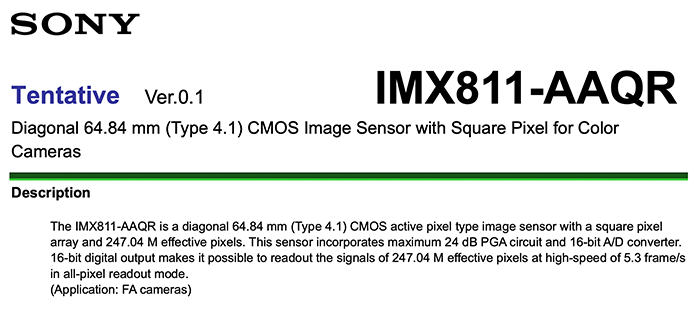
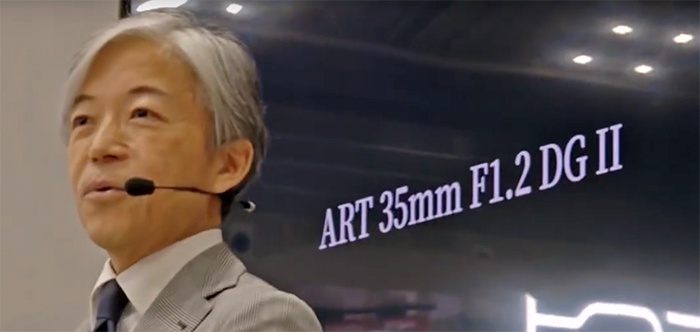


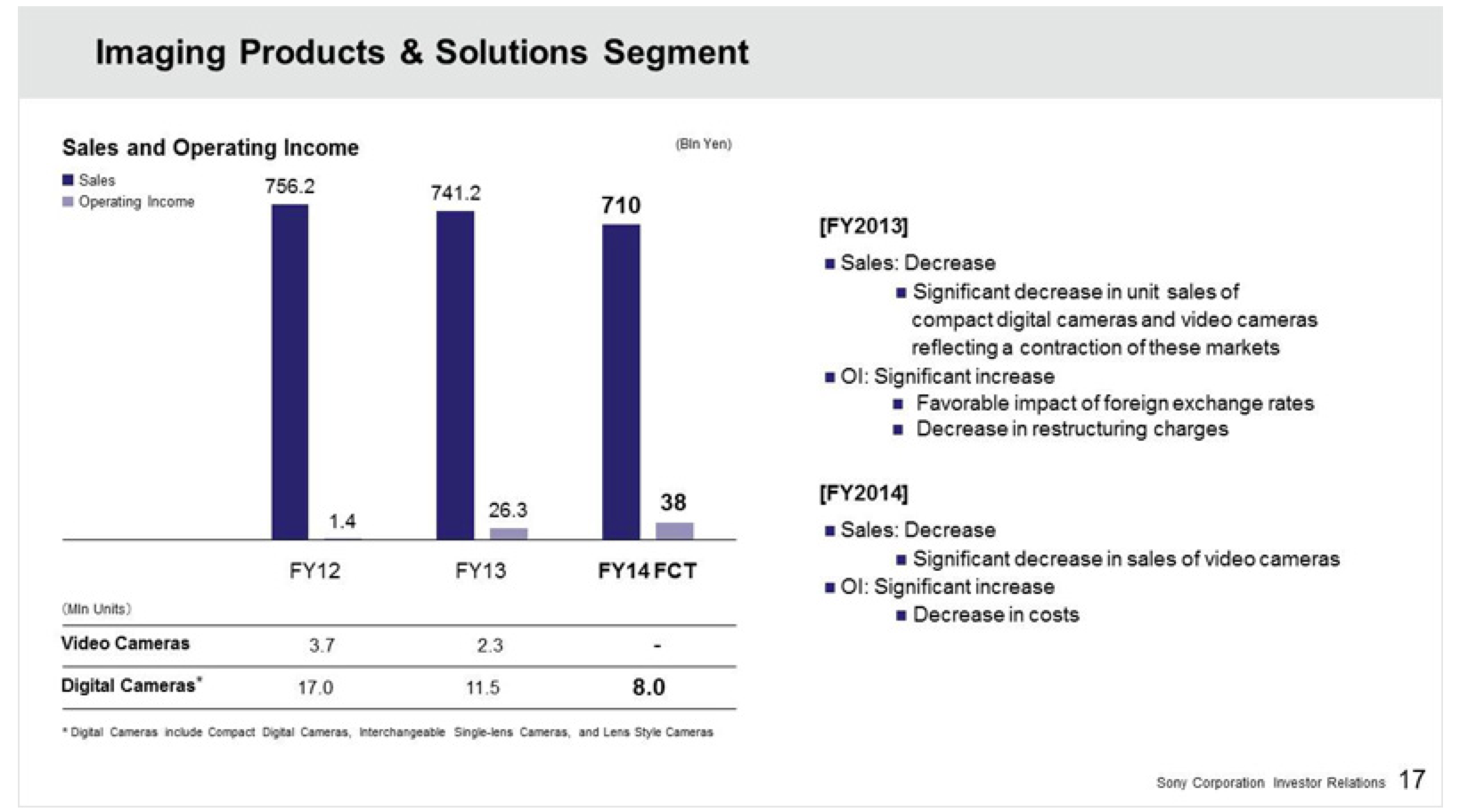


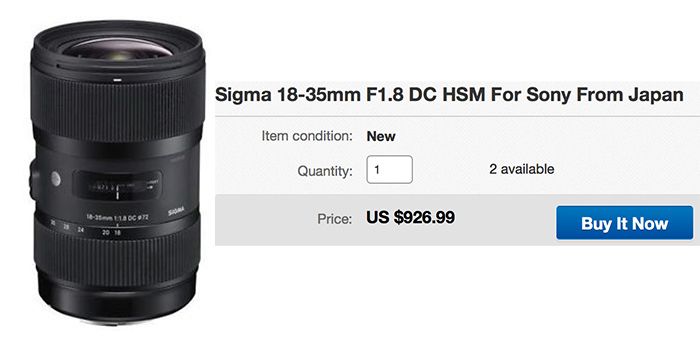 [/shoplink]
[/shoplink]
